


By Mary L. Tabor
Outer Banks Publishing Group author
How does autobiography work in fiction?
Subtitle: Why my collection of short stories The Woman Who Never Cooked might in some sense be called non-fiction. Here’s the probing answer to the difficult question, Where is the TRUTH? (*asterisks refer to footnotes at the end of this essay).
You know the line: Truth is stranger than fiction? I have a twist on that. I’ve learned through the writing of three books and a fourth in process* as I write this essay that the fictional account of my stories have greater emotional truth and intellectual significance than the factual ones.
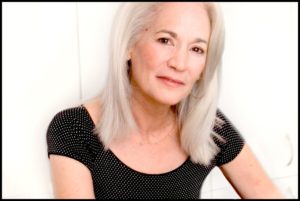
Mary L. Tabor
As memoir has increased in popularity** both in books and movies—“A True Story” being the familiar movie tag—I’ve continued to argue that fiction, written close to the bone, will likely provide the reader with a deeper look into the life and soul of the writer, but more important, the reader if the story is worth your time.
Think first of this question, one that I pose to myself for purposes of this essay: Do you think self-revelation is part of the process of writing?
My answer: Any serious writer who denies it, lies.
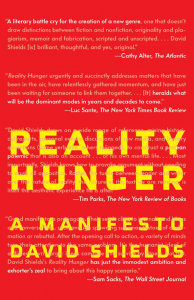
Reality Hunger by David Shields
I agree with David Shields who argues in favor of self-revelation and to a large extent against the novel that is not self-revelatory. He does so in Reality Hunger through a series of quotes, occasionally his own—unabashedly without full attribution (but that’s another story) using only the name of the writer. Here’s John Berger, “Authenticity comes from a single faithfulness: that to the ambiguity of experience.” And later, the late David Foster Wallace, “I don’t know what it’s like inside you and you don’t know what it’s like inside me. A great book allows me to leap over that wall: in a deep, significant conversation with another consciousness, I feel human and unalone.” ***
A serious writer can’t help but reveal even as the lie of fiction operates.
Lee K. Abbott, a writer and teacher I know and admire, has put the issue succinctly this way: “All stories are true stories, especially the artful lies we invent to satisfy the wishful thinker in us, for they present to us, in disguise often and at great distance, the way we are or would want to be.” ****
My collection of short stories includes three memoir pieces I don’t identify and I will use them here to explain why I argue that the fiction is more powerful, more truthful, if you will, than the so-called true story.
First, I give as example a comparison of what is essentially the same story told in fiction and also in memoir.
I put aside my novel Who by Fire (reviewed by Michael Johnson, regular columnist on FactsandArts.com) that was close to finished when my husband said after 22 years of marriage, oh-so-Greta-Garbo, “I need to live alone.”
This event stopped me in my tracks—and eventually I blogged my life while I was living it. That blog turned into the memoir (Re)Making Love. That book like Who by Fire is a love story but oddly one that fiction would probably not find credible.
I learned through these two books that the fictional account of my story has greater emotional truth and intellectual significance than the factual one that you can find online and in the 2011 Valentine’s Day issue of Real Simple Magazine where my husband and I tell our story.
Here’s how I learned what the so-called true story didn’t reveal. I am the reader for the audible.com version of Who by Fire. While reading it aloud in an NPR recording studio, I discovered my own book as if for the first time. I realized I’d written this novel to find the man I must have known on the unconscious level I was losing. Good fiction, meaning you know while you’re reading that the writer is risking her life, can go to this place of hard truth in a way that memoir because of its hold on the so-called facts can’t do if the writer is honest—and honesty is the key word here to understand my meaning.
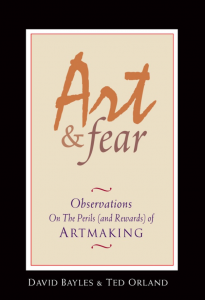
Art and Fear by David Bayles and Ted Orland
In their book Art and Fear, David Bayles and Ted Orland explain our resistance to fiction—or to any art—this way: “[T]he prevailing premise remains that art is clearly the province of the genius (or, on occasion, madness). … [A]rt itself becomes a strange object—something to be pointed to and poked at from a safe analytical distance. To the critic, art is a noun.
“Clearly, something’s getting lost in the translation here. What gets lost, quite specifically, is the very thing artists spend the better part of their lives doing: namely, learning to make work that matters to them. … [W]hat we really gain from the artmaking of others is courage-by-association. Depth of contact grows as fears are shared—and thereby disarmed—and this comes from embracing art as process, and artists as kindred spirits. To the artist, art is a verb.” *****
I decided to further prove the force of fiction by revising the title character’s name to Olivia in each of The Woman Who Never Cooked’s stories. The allusion is to that character in Shakespeare’s Twelfth Night, the comedy that takes center stage in the story “Madness and Folly” about my father after he broke his hip—in real life and here in fiction.******
I could say that I am hidden inside the fiction—but in fact I am not. In the fiction, I used food and adultery as metaphor for the grief I bore through my mother’s, my father’s and my sister’s illnesses and deaths. I wasn’t sure who I was. As a prime example, I didn’t know when I wrote “The Woman Who Never Cooked,” the title story, that I would become that woman.
When I first wrote each of the stories the central character had the same name in every story because I knew that what I was doing was direct, tough purposefully artful exaggeration of my autobiography. My agent at the time suggested that I change the main character’s name to hide that fact. But the book only achieved publication after I added two of the three memoir pieces that had been published in literary magazines. All the stories have been published first that way, and the importance of the small literary magazine, I talk about here. You may go there and read that essay, entitled “Miss Rich is married and living in Cambridge, Mass.”, referring to the poet Adrienne Rich in an early bio when she first published, and the essay names places you might also choose to publish your work.
The stories in the collection that are memoir are: “Rugalach,” a tribute to my mother; “Losing,” a tribute to my father; and the eponymous closing story “The Woman Who Never Cooked.”
Let’s talk about the fiction and why I am now convinced that each of the other eight stories is more powerful, more truthful than the memoir—with the exception of “The Woman Who Never Cooked.” I say this about the last because it is written in third person like a fairy tale. The opening line is, “There once was a woman with 327 cookbooks who never cooked.” Through food, this true-to-its-core memoir tells the story of my mother’s, my father’s and my sister’s illnesses and the effect on living that their trials had on me.
For the second edition, I changed the central character in all the stories to “Olivia.” You may read one of the short stories “The Burglar” for free here at The Santa Fe Writers Project where the collection won the grand prize. That story and was published twice before appearing in the book of short stories. I’ll use this story to explain.
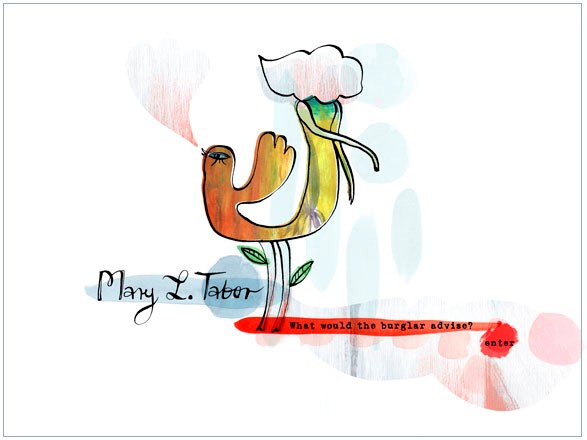 The image above that I use on my website was designed by Zaara.com and uses the line “What would the burglar advise?” a line inside the story—not exactly a line you’d expect in a story written as non-fiction.
The image above that I use on my website was designed by Zaara.com and uses the line “What would the burglar advise?” a line inside the story—not exactly a line you’d expect in a story written as non-fiction.
You would think me mad if I’d written this as memoir because the actual burglar is alive and well in this story—something only fiction can achieve without madness. Even Robin Hood and maid Marian appear in the story in an Internet game.
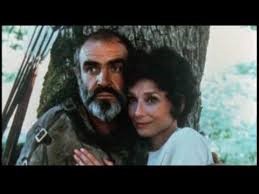 Audrey Hepburn as Maid Marian and Sean Connery in the 1976 flick.
Audrey Hepburn as Maid Marian and Sean Connery in the 1976 flick.
But the burglar himself is essential to express the love letter to my husband that I wrote here in the aftermath of my mother’s death and a burglary that actually did occur in our home while we were away visiting both our children at college. These facts I compress into the story’s essence.
So where is the truth? Does Ruth/Olivia actually desire the burglar? Does a burglar come to her home from his on Virgilia, a street near mine where the burglary actually occurred? Does it matter that I still own the locket that is in the burglar’s pocket and that the actual burglar chose all my other jewelry to steal and left behind the locket with its crude seal?
With that fact, the story wrote itself. Locket in hand that my mother had saved with a lock of her mother’s hair sealed inside, I went on the journey of discovery and the result is heartfelt non-fiction that cannot accurately be called that.
Joyce Carol Oates has put the conundrum of literary fiction so often spurned for the “true” story because, What can one learn from a “fiction”? this way:
“So much of literature springs from a wish to assuage homesickness, a desire to commemorate places, people, childhoods, family and tribal rituals, ways of life—surely the primary inspiration of all: the wish, in some artists clearly the necessity, to capture in the quasi permanence of art that which is perishable in life. Though the great modernists—Joyce, Proust, Yeats, Lawrence, Woolf, Faulkner—were revolutionaries in technique, their subjects were intimately bound up with their own lives and their own regions; the modernist is one who is likely to use his intimate life as material for his art, shaping the ordinary into the extraordinary.” *******
What I hope to have done here and for all the stories I’ve written that are quote fiction is to lift the curtain on that much misunderstood word. I argue that to dismiss out of hand the truth that close-to-the-bone, self revelatory fiction reveals is to miss a connection that may reveal to you those quote truths that would otherwise remain unspoken. The reason? Fiction, like all the arts that reveal through artifice, frees the unsayable. Why oh why would any of us who read or go to movies or art museums or photographic exhibits wish to miss that unsayable truth because we want the quote true story?
· *Dangerous Love my novel (am completing now).
· ** As an example, Leigh Gilmore, author of The Limits of Autobiography, notes that “…[T]he number of new English language volumes categorized as ‘autobiography or memoir’ roughly tripled from the 1940s to the 1990s. (Analysis based on data from the Worldcat database). See p. 1, footnote 1 of her book, Cornell University Press, 2001.
· *** David Shields, Reality Hunger, “412’ John Berger, p. 139; ‘421,’ David Foster Wallace, p. 141, Alfred A. Knopf, 2010.
· **** Lee K. Abbott, “Fifty Years of Puerto Del Sol,” Puerto Del Sol, Vol, 50, 2015, p. 194.
· ***** David Bayles and Ted Orland, Art and Fear, Capra Press 1997 p. 89.
· ****** Mary L. Tabor, The Woman Who Never Cooked, Mid-list Press, 2006. Mary L. Tabor, The Woman Who Never Cooked, second edition kindle and paperback version, Outer Banks Publishing Group, 2019.
· ******* “Inspiration and Obsession in Life and Literature,” Joyce Carol Oates, New York Review of Books, August 13, 2015.

Outer Banks Publishing Group author Mary L. Tabor contributed her writing expertise on Day 3 of a 30-day writing challenge sponsored by Wattpad.
Watch her video on creating the right point of view
Learn more with Mary’s bestselling stories about women’s challenges in today’s hyperspeed society, The Woman Who Never Cooked. The book is now published in its second edition by Outer Banks Publishing Group and available in our bookstore, on Amazon and in bookstores everywhere. The book is
“The American adult woman is featured in this debut collection of stories about love, adultery, marriage, passion, death, and family. There is a subtle humor here, and an innate wisdom about everyday life as women find solace in cooking, work, and chores. Tabor reveals the thoughts of her working professional women who stream into Washington, D.C., from the outer suburbs, the men they date or marry, and the attractive if harried commuters they meet.
“Her collection of short stories The Woman Who Never Cooked, published when she was 60, won the Mid-List Press First Series Award.
“Mary Tabor writes with astonishing grace, endless passion, and subtle humor,” wrote reviewer Melanie Rae Thon.
https://www.outerbankspublishing.com/writing/novel-writing-is-like-taking-a-good-photograph/
While we can now communicate in the fastest, easiest and most convenient ways possible using a myriad of devices anywhere, anytime to anyone in any corner of the connected world, I believe we are losing our ability to communicate.
 |
| Jeff Bezos |
 |
| Andy Grove |
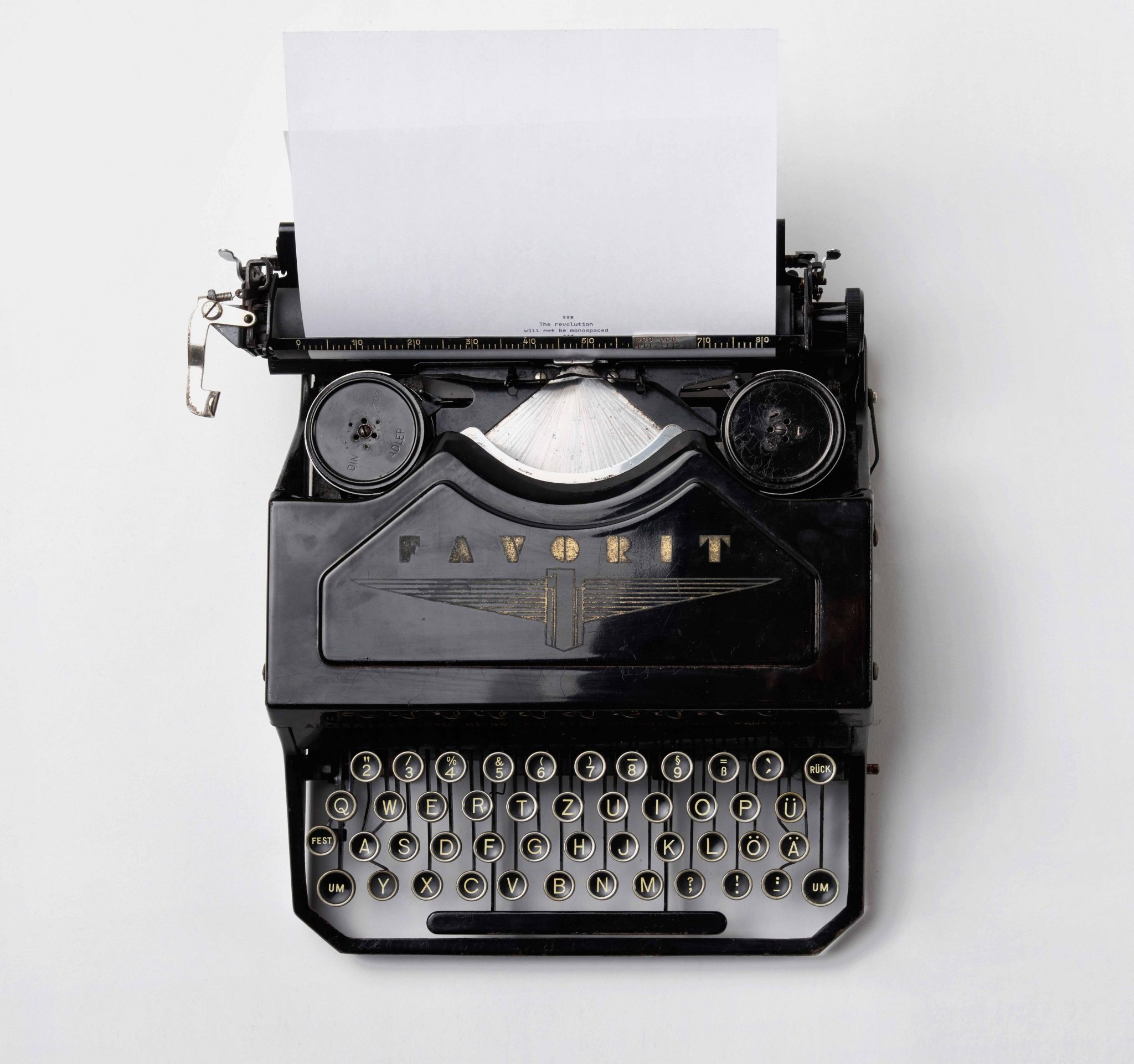
By Anthony S. Policastro, Publisher
While we can now communicate in the fastest, easiest and most convenient ways possible using a myriad of devices anywhere, anytime to anyone in any corner of the connected world, I believe we are losing our ability to communicate.
Because communication is now ubiquitous, convenient, easy and instant, we have taken our writing skills for granted. Take emails. I believe that most of us are so comfortable with communicating with this medium that we use it like we are conversing with a good friend. Facebook and Twitter reinforce this mindset because we know our posts and tweets are reaching friends and relatives.

Jeff Bezos
The result is a quantum disconnect fueled by snippets of information that are most times incomprehensible.
When you a sitting face to face and having a conversation, the context of what you are talking about is always top of mind. But when you converse in the same manner with email the recipient may not read email for hours or days. The context gets lost. Complicate that with several acronyms in the copy and you might as well call a cryptologist.
We tend to write emails as if the recipient is sitting across from us leaving out the content because we believe the recipient will know what we are writing about. We have become lazy writers.
And I’m not alone in my view.
Walter Chen in his blog, IDoneThis.com, wrote about Jeff Bezos, founder of Amazon who values writing over talking to such an extreme that in Amazon senior executive meetings, “before any conversation or discussion begins, everyone sits for 30 minutes in total silence, carefully reading six-page printed memos.”
Writing out full sentences enforces clear thinking, but more than that, it’s a compelling method to drive memo authors to write in a narrative structure that reinforces a distinctly Amazon way of thinking—its obsession with the customer. In every memo that could potentially address any issue in the company, the memo author must answer the question: “What’s in it for the customer, the company, and how does the answer to the question enable innovation on behalf of the customer?”
Like Bezos, Andy Grove of Intel finds value in the process of writing, but he doesn’t consider reading important. Grove considers the process to force
yourself “to be more precise than [you] might be verbally”, creating “an archive of data” that can “help to validate ad hoc inputs” and to reflect with precision on your thought and approach.
Writing, according to Grove, is a “safety-net” for your thought process that you should always be doing to “catch … anything you may have missed.”
So what is the solution? Write more, write casually, but include all the pertinent facts and pretend your reader knows practically nothing about what you are writing about.
By Anthony S. Policastro, Publisher When writing a novel it is a bit like taking that award-winning photograph. Don’t worry, you don’t have to take great photographs to be a great novelist.
In today’s world with dozens of media channels bombarding us every minute of the day, your book has to stand out from all the noise.
Here are elements that should be included in your novel and help to make your book stand out. You can pick and choose a few or include all, but you should have at least one.
Now here is how writing is like photography. Look at the photo below. Pretend it’s your realty – what you perceive through your senses. Now write a story about that photograph. You would describe the scenery, the asphalt path, the fallen leaves and twigs…overall what you wrote is pretty boring and a nondescript story unless those elements play a part in your plot.
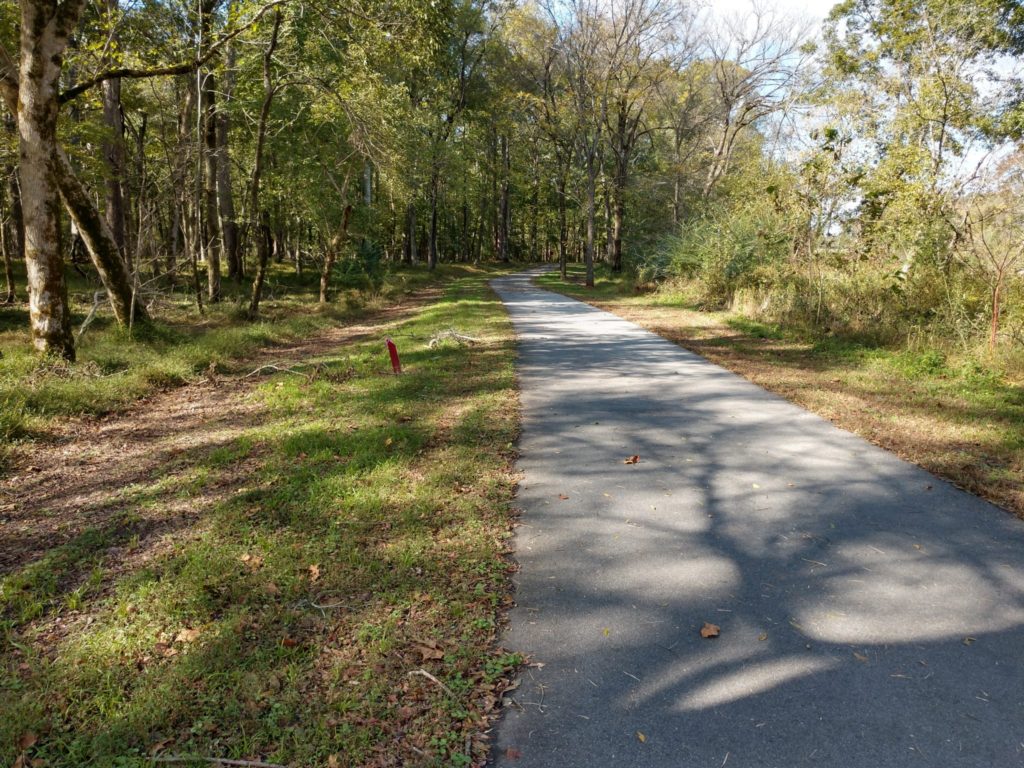
Neuse River Greenway trail, Raleigh, NC
If you look closely or view the scene from a different angle or perspective there is a better story there. 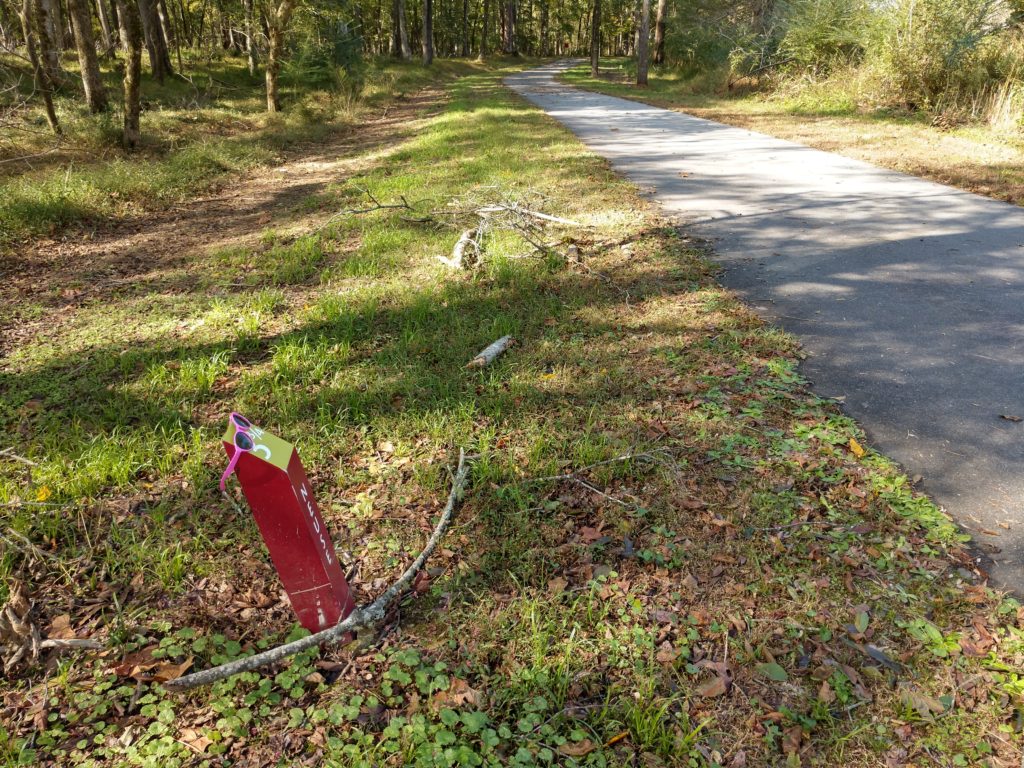 The story reveals itself upon a closer look – a nice person found the pink sunglasses on the trail and was considerate enough to place them on the milepost, hoping the person would pass this way again and find the sunglasses. Out of the reality emerges a story.
The story reveals itself upon a closer look – a nice person found the pink sunglasses on the trail and was considerate enough to place them on the milepost, hoping the person would pass this way again and find the sunglasses. Out of the reality emerges a story. 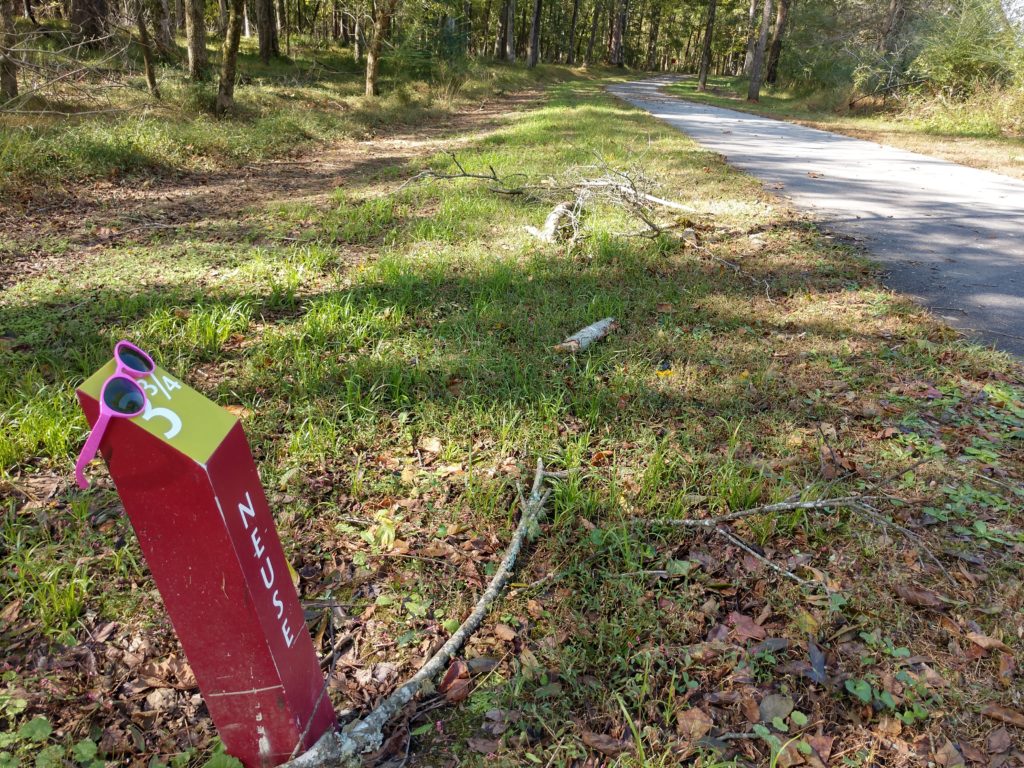 The photographer views and analyzes the light, shadows, colors, shapes and how they play against each other and then picks an angle or position for the shot. Writing is the same. A good book is like taking a snapshot of reality, analyzing that realty, digging deeper until the hidden story is found in plain sight and then putting it to words. Tell us what you think. We would love to hear your thoughts.
The photographer views and analyzes the light, shadows, colors, shapes and how they play against each other and then picks an angle or position for the shot. Writing is the same. A good book is like taking a snapshot of reality, analyzing that realty, digging deeper until the hidden story is found in plain sight and then putting it to words. Tell us what you think. We would love to hear your thoughts.
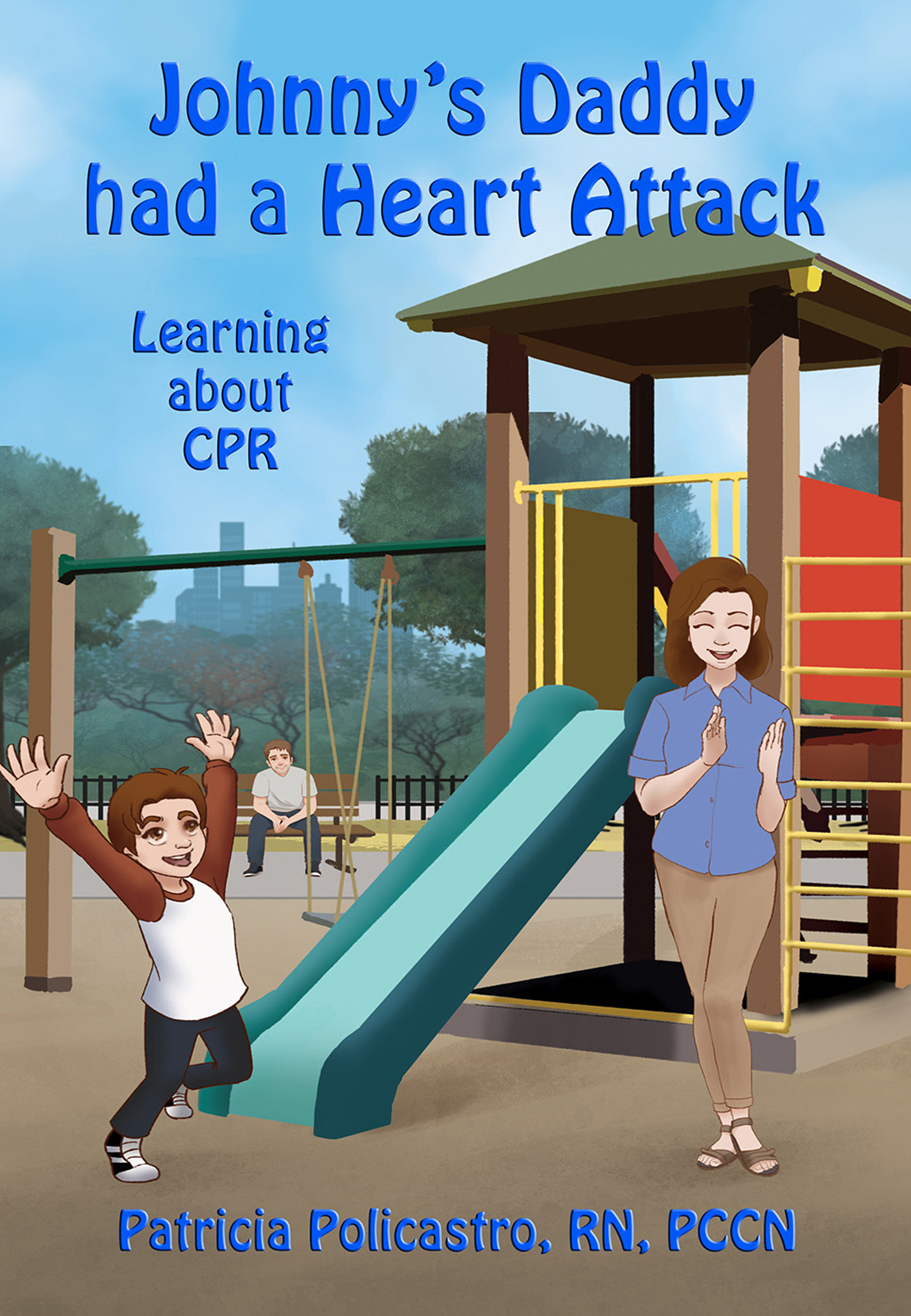
We are excited to publish Patricia Policastro’s first children’s book, Johnny’s Daddy had a Heart Attack, which illustrates how EMTs administer CPR and save people in critical health situations.
In this interview Ms. Policastro, a critical care RN, tells us how she hopes her book will help children understand and cope with an emergency in their family or anywhere.
And the best part is 10% of the profits from the book sales will go to the American Heart Association.
I was inspired to write this story by a friend’s husband who had a heart attack when their son was a young age. He did not receive CPR, as he didn’t lose consciousness, but he had chest pain and suddenly did not feel well. He ended up at the hospital with stent placement. Just thinking about their situation inspired me to try to help children in some way. As a nurse, we are always teaching and what better than to teach about a life saving intervention.
Why would this story help children? What is the purpose of the story?
If a child witnesses a similar event, hopefully they will recall what they have learned from the story and have more of an understanding of what is happening during the event, rather than not knowing and feeling scared. The target audience is children ages 4 through 12. My hope and the purpose is to reduce their fear and anxiety during an emergency.
What does the story accomplish? What do you hope to accomplish?
I hope to start children learning about health and life-saving measures at an early age. This story will introduce children to an emergency which necessitates calling “911” and how CPR intervention and an AED (Automated External Defibrillator) helps the human body.
I hope to advocate for people with heart disease by teaching children more knowledge about it and possibly, in their future, when they are older, they might want to become CPR-certified and possibly save someone someday!
How did you research information for the story? Did you have experience in health care or working with children? Have you had to perform CPR?
I am a registered nurse who had experience working on a step down unit for open heart surgical patients, as well as experience working on a Medical-Surgical unit, a Telemetry unit, with some Critical Care experience. It is required to be BLS certified (Basic Life Support) which is inclusive of CPR training. Unfortunately, I have had to apply CPR to some of my patients, and it is a stressful and emotional situation.
The only experience I had working with children, quite frankly, was at a daycare center while I was attending nursing school, but not in a nursing capacity. However, I still felt I could relate to how they would feel and react during an emergency and wanted to try to help in some way.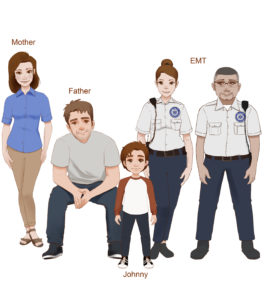
How long did it take you to write the story?
I have been working on this project over several years, believe it or not. I would work on it, then put it aside, of course, because life gets in the way at times. One of the main barriers to finishing the book was finding an illustrator within my budget. Once I was referred to an illustrator, the completion of this story really began to come together.
Did anyone help you or advise you?
Yes, of course! I feel you should always seek advice or help when you need to. That is also part of being a nurse. I approached a former coworker who now owns his own company, where he trains for BLS certification. He willingly offered his employees’ time to help by modeling the CPR positions so I could photograph them, and I then sent the photos onto the illustrator. The illustrator, I feel, was creative in capturing the fine details of my scene descriptions. I also pursued an opinion from one of the interventional cardiologists I work with, who suggested that there were still some technical terms which needed to be simplified for better understanding. But much direction and advice I attribute to my publisher, Outer Banks Publishing Group. After recommending an illustrator, my publisher really gave me the incentive to continue with and complete my project.
Have you written any other stories?
This is my first story. I was inspired by a friend’s health situation. I remember I began to write the story line when I was on the beach during vacation. It actually didn’t take me long to write it, but every time I had reviewed it, I felt the need to edit it. This occurred many, many times. I didn’t realize how difficult it is to get it just right with words children would be able to comprehend and a story line they could understand. You sort of have to put yourself in their mindset.
Will you write another story for children?
Yes, I would like to. I actually have several other story lines in mind, similar to this one whereby teaching children about other health emergencies a family member could experience or other health conditions people might have, but I would first like to see how this story, Johnny’s Daddy Had a Heart Attack, is perceived and accepted.
___________________________________________
Johnny’s Daddy had a Heart Attack
By Patricia Policastro
List Price: $10.99
7″ x 10″ (17.78 x 25.4 cm)
Full Color Bleed on White paper
36 pages
Outer Banks Publishing Group
ISBN-13: 978-1732045200
ISBN-10: 1732045208
BISAC: Fiction / Family Life
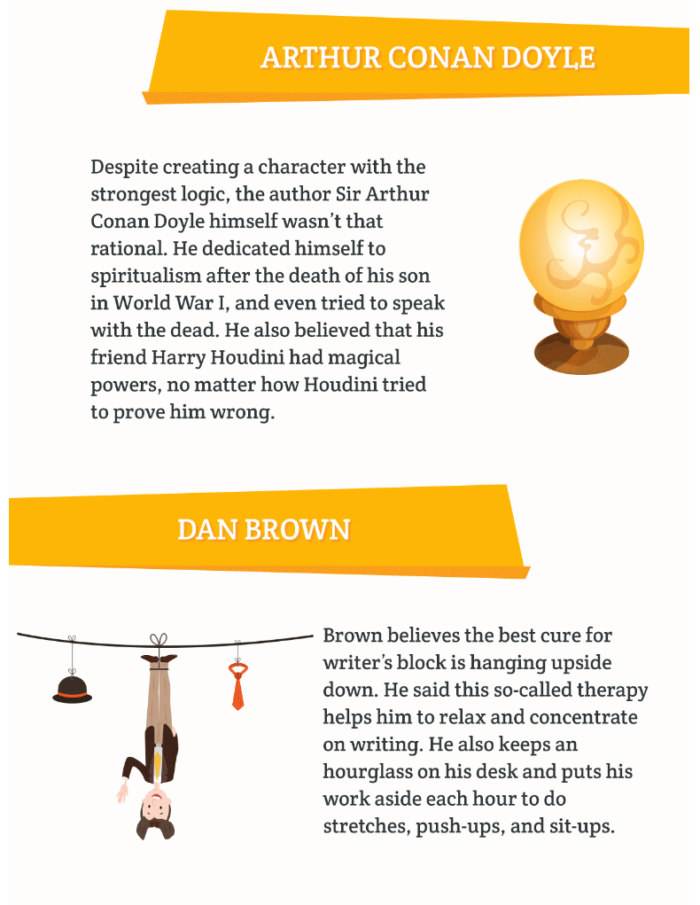
By Jack Milgram of Custom Writing
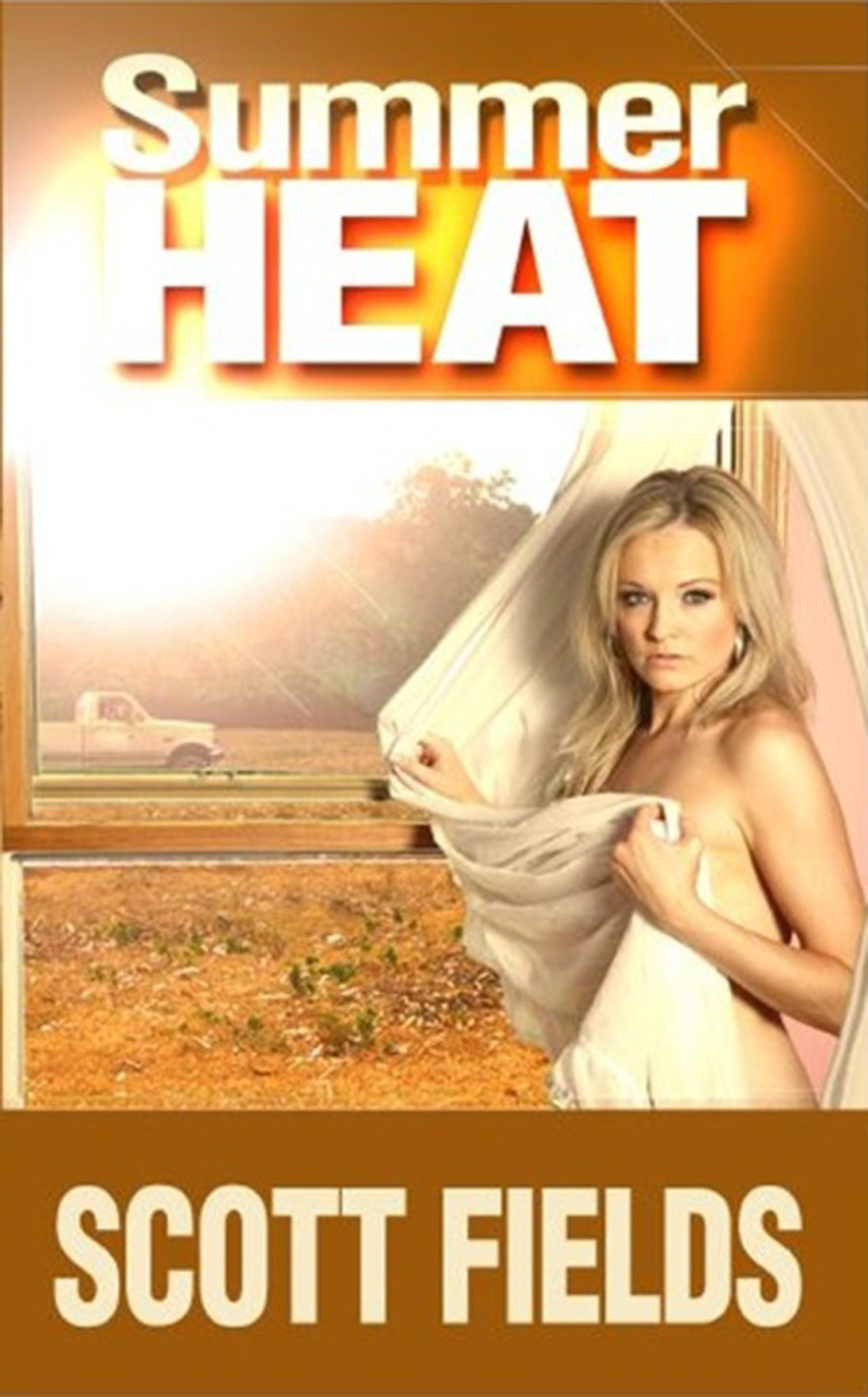
Summer Heat by Scott Fields has been optioned by Forbidden Tears Production Studios to be a major motion picture. Watch for details. Here is a sample chapter published earlier.
From Chapter 3 of Summer Heat
Earl glanced at her chest. Her firm, ample breasts strained the buttons on her blouse. He slightly lowered his head to peek through the openings at the soft skin. Earl swirled his finger down her arm to the soft skin on the inside of her elbow. She was panting now. Her eyes were closed and sweat trickled down her neck and disappeared behind her blouse. He could see the outline of her hard nipples. His finger was only inches away. So far, it had all been innocent play. He had not crossed any line, but that was about to change. His head throbbed. He could feel the blood pounding through his veins.
It was near closing. The last of the patrons were walking out the door. Jessie was wiping down the bar when Earl 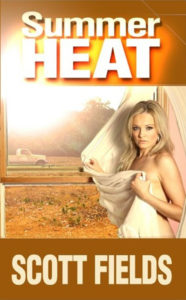 leaned back in his chair.
leaned back in his chair.
“Hey, there, Lil’ Darlin’, bring me a bottle of the good stuff,” he said. “And bring two glasses.”
Jessie knew what the good stuff was. Earl loved Crown Royal and kept cases of it in the backroom. She carried the bottle and two glasses across the room and set it on his table.
“Sit down, girl,” he said. “I don’t want to drink alone.”
“It’s late, Earl,” she said.
“What are you talking about? We still got a half hour before closing.” He poured two drinks. “Here, this will get you where you need to go.”
“I don’t think I ever had any Crown Royal before.” She sipped the drink. “Damn, that’s good stuff.”
“How come that old man of yours never got you any?”
“Frank doesn’t drink.”
“He doesn’t? Hell, that don’t sound American.”
“He ain’t never even tried it.”
Earl gulped his drink. “Don’t know what he’s missin’, does he?”
Jessie took another sip. “This stuff is so smooth.”
“Drink up, girl,” said Earl filling the glasses. “We got this whole bottle here to kill off.”
“Must be terribly expensive.”
“Are you enjoying it?”
“Yes.”
“Then don’t worry about it,” he said. “It wouldn’t hurt you none if you untied a few of them knots.”
Jessie gulped her drink. “What are you talking about?”
“You just look like you might need to unwind,” said Earl. “You seem tense or upset about something.”
“You might be right.”
Earl filled her glass again. “Must be hard on you with Frank gone.”
She leaned back in her chair. “Yeah, I miss him a lot.”
“Pretty young thing like you must miss havin’ a man carry you off to bed.”
“Oh, Frank isn’t that kind of guy,” she said, her words slurring already. “He loves me. I got no doubt about that, but in his own way.”
“In other words, you ain’t getting any.”
Jessie filled her glass and took another drink. “Why? You applying for the job?”
Earl reached out and placed his hand on top of hers. “That I am, darlin’,” he said with a sober voice.
Jessie set her drink on the table and leaned back. Her head was spinning from the alcohol. It had all been light-hearted banter until now. Even in her drunken stupor, she could see that he was serious.
“Think you’re man enough?” she asked with a smile.
Earl tightly gripped her hand. His smile disappeared. “I know I’m man enough.”
It was about that time that the other waitress started towards the front door. Earl bolted across the room to let her out. He said his good nights, let her out and latched the door behind her.
“We’re all alone,” he announced with a smile.
Jessie pointed at a chair next to hers. “Come and sit down next to me.”
Earl slowly swaggered across the room. Beads of sweat erupted on his forehead. He had thought about this moment ever since he met her. Fantasies of her swirled in his mind. His head throbbed with excitement. He pulled up a chair and sat next to her.
“Now where were we?” he asked, his voice raspy.
“You were telling me how much of a man you are.”
With one hand, Earl began rubbing her back and shoulders. Jessie moaned in approval.
“Tell me something,” said Earl. “How married are you?”
“What do you mean?”
“You know what I mean.”
She held up her hand. “I have a ring.”
Earl sneered. “That don’t mean anything.”
He ran his hand over her shoulders and lightly caressed her bare arm.
“I didn’t think that would make much of an impression,” she said closing her eyes. “Damn, that feels good.”
He ran one finger lightly over her cheek. “I know something else that would feel even better.”
Jessie said nothing. She groaned as he lightly swirled his finger over her bare skin.
“Relax,” he said. “You seem tense.”
“It’s been a long time.”
“A long time for what?”
“Since…since a man has touched me.”
“How does it feel?”
“Incredible,” she said with a slur. “Simply incredible.”
Earl glanced at her chest. Her firm, ample breasts strained the buttons on her blouse. He slightly lowered his head to peek through the openings at the soft skin. Earl swirled his finger down her arm to the soft skin on the inside of her elbow. She was panting now. Her eyes were closed and sweat trickled down her neck and disappeared behind her blouse. He could see the outline of her hard nipples. His finger was only inches away. So far, it had all been innocent play. He had not crossed any line, but that was about to change. His head throbbed. He could feel the blood pounding through his veins.
Earl reached over and lightly touched the side of her breast. It was firm and yet soft to the touch. Jessie jerked. She moaned and arched her back. Earl withdrew his finger. He wasn’t sure. Was that a cold reaction? Was she pulling away? Then, Jessie moved her chair closer and turned in his direction. “Please,” she uttered softly.
Her breasts were right in front of him, heaving now from her heavy breathing. Earl could see her nipples through the sweat-soaked blouse. He could feel his manhood throbbing in his pants. He reached over and gently unbuttoned the top button of her blouse. He glanced at her face for a reaction.
“Faster,” she muttered.
His hands trembled as he fumbled with the remaining buttons. When he finished with the last one, he slowly pulled her blouse open. Cool air from a slow-turning ceiling fan washed over her exposed breasts making her nipples even harder and leaving small bumps on her skin.
In spite of his gruff exterior, Earl knew women and he knew what pleased them. He reached over with both hands and lightly touched the sides of her bare breasts. She jumped slightly but moved even closer. He slowly moved his fingers to the underside of her breasts, caressing the soft skin, coming close to her nipples but never touching them. He then formed circles around the breasts even closer to her nipples, occasionally, brushing them as if by accident.
By then, Jessie’s chest was rising and falling as she gasped for air. Earl firmly grasped her ribcage and leaned towards her. He lightly touched her lips with his. As she moved closer to kiss him, he pulled away, then lightly, hovered his lips over hers.
Crazed with lust, Jessie pulled him close to her, savagely kissing his lips. The taunting and teasing was over. Earl wrapped his arms around her and kissed her long and hard. Still locked in a tight embrace, Jessie slid her cotton blouse over her shoulders and let it fall to the floor. Earl fumbled with his belt sending his pants sliding down his legs. He stepped out of them just as she did hers.
“Take me now,” she said with a raspy voice. “I don’t care where, just do it.”
Earl picked her up and sat her on the edge of the table. He grabbed her ankles and slid her closer to the edge. Jessie lay back on the table. She wanted to scream. Her whole body was on fire. He had to do, and he had to do it now. What was he waiting on? She could feel hot liquid as it dripped from the tender folds of her skin and onto the floor. He wasn’t going to tease her again. He wouldn’t do that. He couldn’t.
Then it happened. She felt his strong, hard manhood as it slid, effortlessly, into her. She screamed with pleasure. Her whole body screamed with pleasure. It was obvious that the teasing and taunting of foreplay was over. He was at the right height and could easily slam it deep into her. She screamed with pleasure at every thrust that he made.
Her first orgasm came within seconds, the second and third minutes later. He picked up speed, slamming home even faster. Jessie was delirious with pleasure. Her orgasms seemed to be coming with every thrust. It went on for what seemed like an eternity. She had never experienced anything like this before. He was man enough. That was for sure.
Just as she was about to pass out, he slowed his movement. He leaned his head back and emitted a guttural, almost primal growl. She felt him pulsating inside her, then, slowed to a stop.
___________________________
Want more? Preview Summer Heat here>
Summer Heat is available in print from The Outer Banks Publishing Group Bookstore at $10.99 and on Amazon, the Kindle, and bookstores everywhere.
Paperback: 212 pages
Language: English
ISBN-10: 0982993110
ISBN-13: 978-0982993118
Product Dimensions: 8 x 5 x 0.5 inches
Shipping Weight: 10.4 ounces
Welcome to our book store
We hope you find a book that will enlighten your life

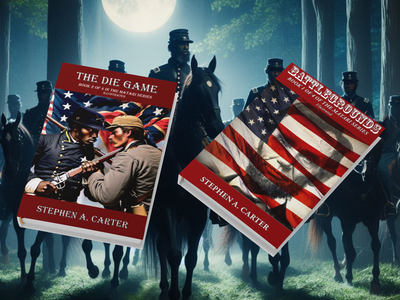
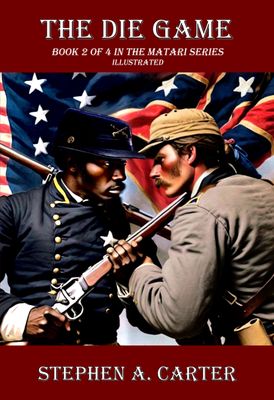
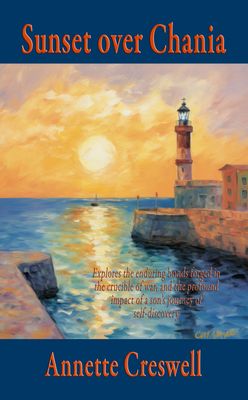


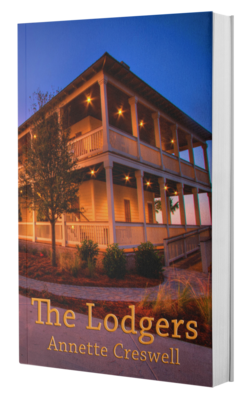
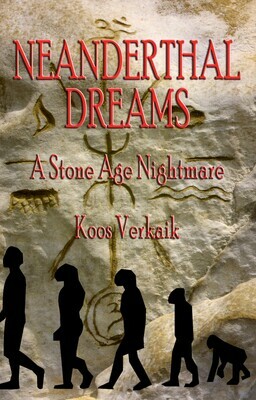
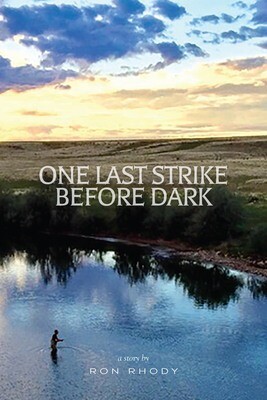

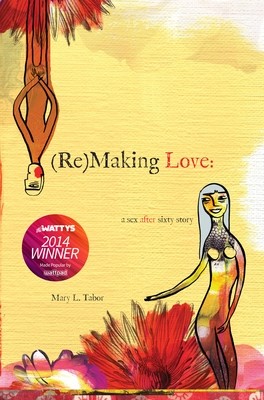
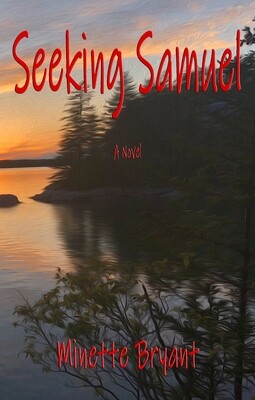
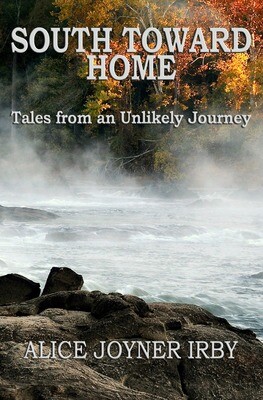

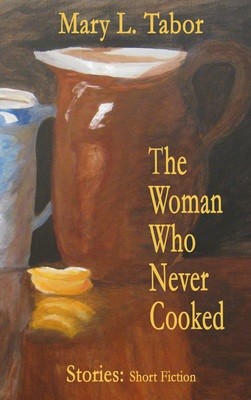

Author James Patterson, former President Clinton (Genaro Molina / Los Angeles Times; Diedre Laird / Charlotte Observer)
Have you heard…former President Bill Clinton and iconic author James Patterson have teamed up to write a novel, The President is Missing, that will be published June 2018.
Alfred A. Knopf and Little, Brown and Company will jointly publish the novel, which represents a rare foray into fiction for a former president, according to the report published in The New York Times.
You can read the rest of the story in the Times here.
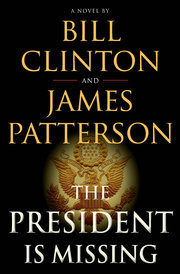
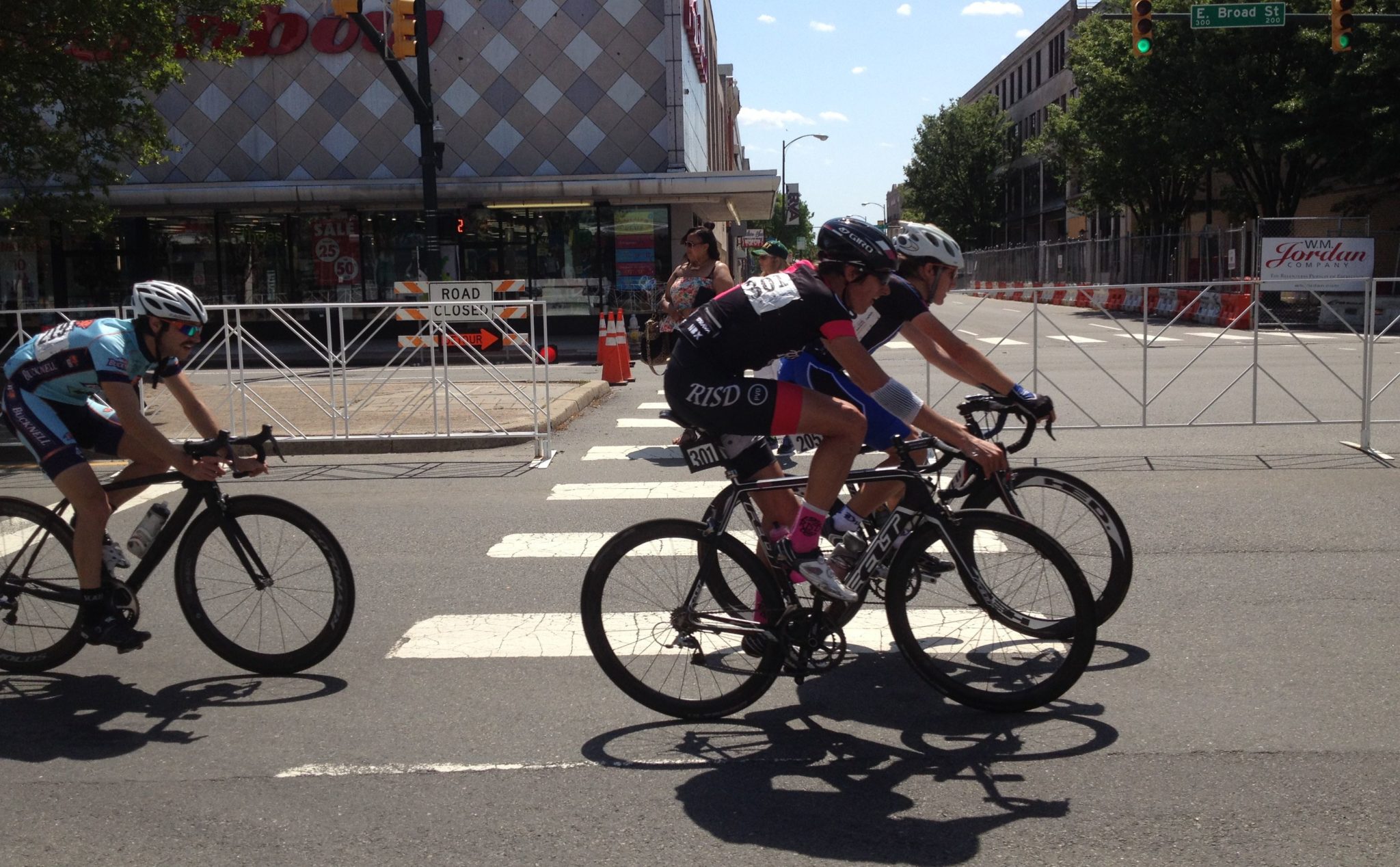
Writer and Internet marketer Aaron Harris notes five good reasons why you should write every day especially if you have a blog or website. His five reasons to keep in shape as a writer are:
Read the rest of Aaron’s article published on the Digital Donut site.